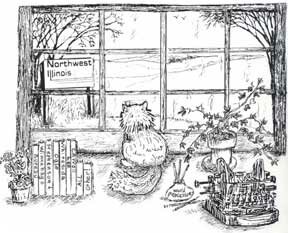Discover rewarding casino experiences. 
|
Fact or fiction from that colorful, dramatic, formative period of our nation’s development it would be difficult to separate the two. An everyday incident then might be unique today and would need no embellishment. Some of his imagination and curiosity may have led him beyond the point of truth! Nehemiah Matson was born near Jacobsburg, Ohio July 19, 1816 to Enos and Elizabeth Mercer Matson. There were eight siblings and Nehemiah was more educated than most of his contemporaries. He studied hard and had a year of college. The parents, farmers, and apparently some of the children and families came West to Illinois to claim land on Bureau Creek in Dover Township, Bureau County probably paying the $1.25 an acre. Nehemiah was twenty years old at the time and bought land adjacent to the parents’ claim. He would marry Electa Mead in May of 1842. They had no children. The Matson’s who in later years lived near Princeton were issue of an uncle. The homesteads of the father and son were about four miles northeast of the village of Princeton, then about five years old. And just a couple miles from the famed Red Covered Bridge. It was constructed in 1863 and its 150th anniversary was just celebrated. It still stands near Route 26.
Although trained for the agricultural life, Nehemiah soon became bored with following the furrow of a plow. He had longed to survey so he taught himself how to master the science. He got to know every inch of Bureau County and by talking to claimants and people seeking plats of villages-to-be or homesteads, came to learn the many factors which gave the new settlers their individualism and character. Henry Thomas is credited with being the first white settler in Bureau County, this in 1828. A sign designates the site on the Walnut-Wyanet road west of Princeton about ten miles west on Backbone Road. It became a tavern on the Peoria-Galena Trail about to become filled with lead seekers, and settlers needing surveying. Times were a-changin’. By 1857 Matson made a change by moving back to town, buying a lot on east Peru Street (120’x165’ - $3,500) which is pictured here taken from the Bureau County Atlas, 1875. Following the passing of the Matson’s, he in 1883, she in 1890, much remodeling occurred during various subsequent owners. Although the cupola was removed, ells exchanged and etc., it was yet in excellent condition at last inspection. Having applied himself to surveying, the job he loved, the Matson’s took the then fashionable tour of Europe (1868) that people of “status” did in the nineteenth century—an eleven month tour of thirteen countries. Of course, Matson talked to everyone—rat catchers in England and daring gravity, rode in a hot air balloon in Paris. Frequently he complained that everywhere there were such crowds of people—on the London Bridge they stepped on his corns. So tightly packed was one group in Rome he couldn’t take off his hat in Rome when the Pope passed. At least that’s what he claimed! All these personal occurrences figured in his note-taking. Always having kept a journal to refer to, small items make his books interesting reading. He realized that a unique era in America’s development was going unnoticed and he, at least, would do it justice if he could. Few at the time, however, realized the importance of the dedication of the neighborhood character. Thankfully, Matson eliminated no one from his conversations. Growing up and older his father lived near a seasonal hunting encampment of Potawatomi whose leader was Shabbona (or Shabbena) who during the “turn-over” from the native American civilization to white settlement was called the “white man’s friend,” risking his life to warn the new people they might be massacred or kidnapped and so forth. With Shabbona’s teenage son, “Smoke” interpreting, the Chief related his life story, activities to Matson over the years to create another chapter in the story of the Midwest which took in the “Underground Railroad,” the Princeton area a center for carrying slaves to freedom. Several families in the area were top level abolitionists and will be told about later. Nehemiah Matson died October 3, 1883 after a four-month long illness. A couple unfinished books lay on his desk. He’d been unable to complete them because a stroke had paralyzed his optic nerve. Despite his larger-than-life personality and his provincialism, he had a keen sense of humor and an instinct for what future reader might want to know about contrasts in life then and the future. In the preface of one of the unfinished books he, in part, stated this in 1882: “In collecting the early traditions of the county has been for the purpose of supplying many missing links in its history and to correct some of the errors...” Matson had written devotedly for nearly half a century, leaving behind legacy and legend. One hardly knows the difference because to us our nation’s past has become a mixed treasure of valuable history. Before his death in ‘83, Matson and wife, Electa, had agreed on their will including leaving $30,000 to Princeton for a library. Following his death, Electa Matson for some unknown reason eliminated that benefit. Action took place in the courts so the city eventually collected only $12,000. A substantial library was constructed in the south business district and was used for twenty-three years when a larger brick built on the Courthouse square was utilized until very recent years when an empty business was remodeled to be used for those services and purpose Nehemiah Matson would have appreciated.
|







